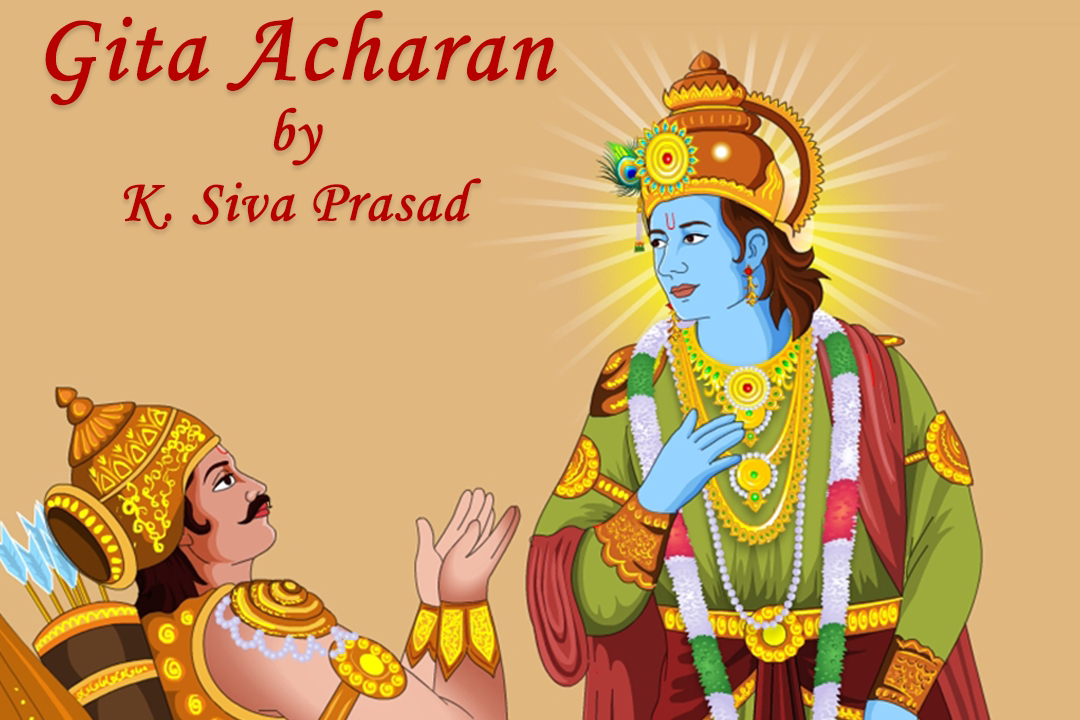180. Form or Formless
At the end of the eleventh chapter (11.55), Krishna says that HE can only be reached through Bhakti (devotion). Thus, the revered twelfth chapter of the Bhagavad Gita is called Bhakti Yoga. Arjun was terrified and frightened to see the original Form (saakaar) of Krishna (Vishwaroopam) and enquires, "Between those who are steadfastly devoted to You (Form) and those who worship the imperishable and unmanifest (Formless -Niraakaar, Nirgun), whom do you consider to be more perfect in Yoga" (12.1)? Incidentally, all cultures have roots in this question.
In the Gita, three broad paths are given. Karma (action) for mind oriented people; Sankhya (awareness) for Buddhi (intellect) oriented and Bhakti (devotion) for heart oriented. Certainly, they are not watertight paths and a lot of criss-crossing takes place between them and that's what is reflected in this chapter. Krishna earlier gave a hierarchy (3.42) and said that the mind is superior to the senses; buddhi is superior to the mind. He also said that he can't be attained through vedas, rituals or charity (11.53). This leads to the conclusion that one reaches Bhakti either through a sequential path of Karma-Sankhya or through an exponential path (very rare). Bhakti is the final step to the Paramatma.
Bhakti is beyond our prayers, rituals or chanting to fulfill our desires or remove difficulties. It is being both Nimitta maatra (an instrument in HIS hand) and Shraddha-vaan (one with Shradha -trust), simultaneously. Nimitta maatra is realising that we are just an instrument in HIS hands when both favourable and unfavorable things happen through us. Shraddha is accepting whatever comes our way as HIS blessings, whether it is to our liking or not. Essentially, it is unconditional love which Krishna described as a state of seeing the self in others, and others in the self; and seeing HIM everywhere (6.29).




Comments
Post a Comment